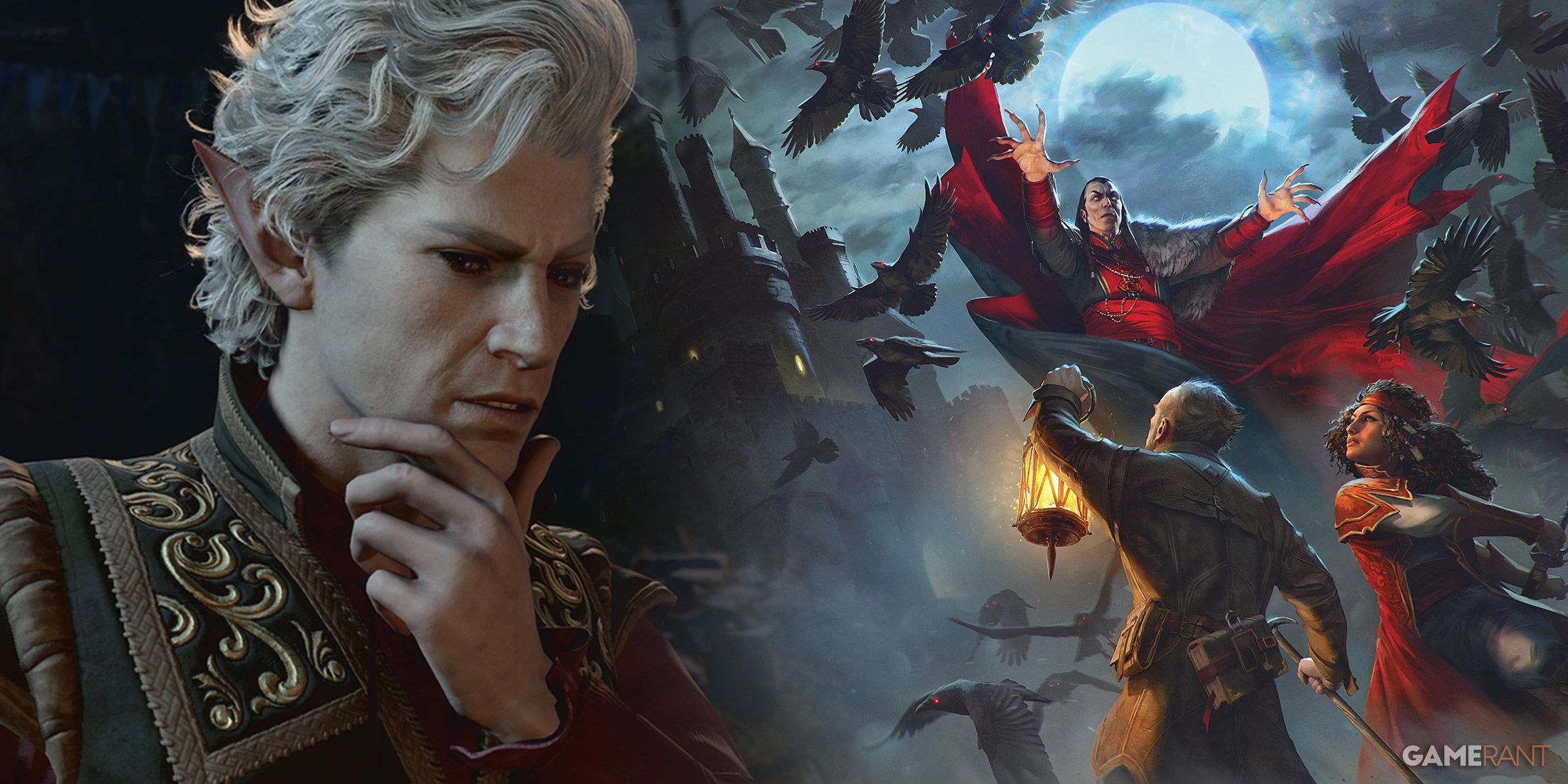One of the many things that makes Baldur’s Gate 3 so addictive and perfect for endless playthroughs is the sheer number of classes and subclasses to choose from. Twelve popular Dungeons and Dragons classes are included in the game, with dozens of subclasses – and more coming in 2025. However, one particular Dungeons and Dragons class is truly given its moment to shine in Baldur’s Gate 3: the Ranger, which is considered situational and sometimes weak in the original tabletop role-playing game.

Related
Baldur’s Gate 3: Why Astarion Fans Should Check Out Van Richten’s Guide to Ravenloft
Van Richten’s Guide to Ravenloft has all the tools needed to create a character and campaign for Astarion fans in Dungeons and Dragons.
Why Ranger Is Sometimes Seen As A Situational Class
Each class in Dungeons and Dragons has its own strengths and weaknesses, and none are truly bad. The Ranger, however, has struggled to find an identity, particularly in the fifth edition of the game. The Ranger shines the brightest in a campaign with a lot of exploration, where they can use their terrain-based skills and tracking abilities to help a party traverse even the most dangerous of areas.
In addition, making a good Ranger often requires cooperation with the Dungeon Master to a degree not necessary for other classes. A Ranger can end up hamstrung by choosing a Favored Enemy and a specialized terrain type (via the Natural Explorer class feature) that do not come up often in a campaign. A well-built Ranger suited to the terrain and foes they encounter can be as powerful as the legendary Drizzt Do’Urden, but lack of communication or an exploration-light campaign can lead to a Ranger who struggles to find a place in the party and can feel weak compared to adventurers of other classes.
Baldur’s Gate 3 Gives Rangers Their Space
While not every Dungeons and Dragons campaign might feature a large amount of exploration, Baldur’s Gate 3 certainly does. A Ranger’s spells can come in handy while traversing Faerun – for example, Speak with Animals can be a vital source of information, as nearly every animal in the game has something to say. Goodberry is a useful source of camp supplies to consume during Long Rests, while Enhance Leap and Longstrider can be vital in dungeons like the Gauntlet of Shar.
Favored Enemy & Natural Explorer Are Re-Interpreted Well
In addition, Baldur’s Gate 3 re-interprets two key Ranger class features. Favored Enemy no longer limits Rangers to doing better against specific enemies, but instead grants them Proficiencies and/or Cantrips based on their past experiences. The Natural Explorer grants bonuses related to the Ranger’s favored terrain, rather than only benefiting them while they are in a terrain of the correct type. For example, a Wasteland Wanderer still has resistance to Cold, Poison, or Fire damage when in the city, while an Urban Tracker keeps their Sleight of Hand proficiency even in the depths of the wilderness.
Baldur’s Gate 3’s Ranger Party Member Is A Fun Example Of The Class
Some Dungeons and Dragons players may go into Baldur’s Gate 3 nervous about playing a Ranger, because of the class’s mixed reputation in Fifth Edition. However, the game addresses this by including a Ranger party member, allowing players to potentially experiment with the class before trying it out themselves.
This character is Minsc, the “Beloved Ranger,” a returning party member from the first two Baldur’s Gate games. He joins the party late in the game, meaning players new to the Ranger class are not forced to use him early on but can try out his skills and spells at their leisure. Minsc is also an incredibly fun example of the Ranger because he comes with a unique Familiar – his miniature giant space hamster Boo, who can be summoned in combat and is not accessible to standard Rangers. Minsc is a great starting point for those just getting used to Baldur’s Gate 3’s new and exciting take on the class.












Leave a Reply